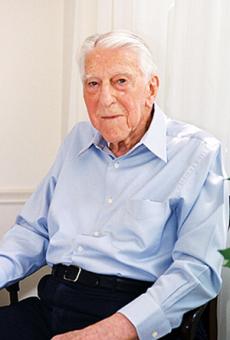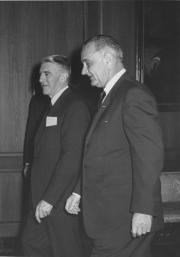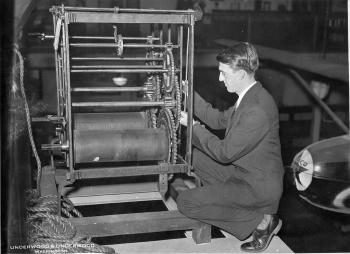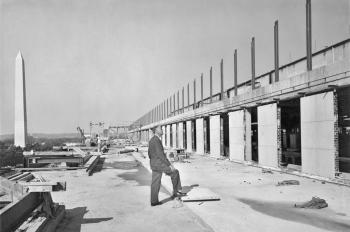
Whenever March 24th rolls around, I stop to fondly recall Frank A. Taylor, the founding director of the National Museum of American History. Long after his retirement, his Smithsonian family would throw an annual birthday party for him, from the time he turned 90 until his death at 104! His 100th birthday party was especially memorable with former colleagues traveling to Chevy Chase, Maryland, from around the world. And for the next two years after he passed away in 2007, we continued to gather and offer a toast to Frank.

A tall, distinguished-looking man with a very deep voice, Taylor commanded respect and affection. I was privileged to conduct a series of oral history interviews with him and began to understand his exceptional management skills. Frank Taylor was a great listener, who could hear both sides of an argument, even when he passionately held an opposite point of view. With that respectful understanding of each person’s point of view, he was able to negotiate compromise and find solutions to thorny disputes.
 Nicknamed “Mr. Museum,” Taylor did not start out interested in the Smithsonian. During his youth in Washington, DC, he would ride his bike right past the imposing museum buildings on the Mall, down to the Tidal Basin to fish or while away a summer’s day. He never visited the Smithsonian until he received a call about a job opening after he had graduated from high school.
Nicknamed “Mr. Museum,” Taylor did not start out interested in the Smithsonian. During his youth in Washington, DC, he would ride his bike right past the imposing museum buildings on the Mall, down to the Tidal Basin to fish or while away a summer’s day. He never visited the Smithsonian until he received a call about a job opening after he had graduated from high school.

Having passed the Civil Service draftsman exam, in 1922 he was appointed a Laboratory Apprentice in the Division of Mechanical Technology in the Arts and Industries Building and the rest was . . . history. He pursued advanced degrees, including a law degree, and when he retired in 1971, he held the title of Director-General of Museums. Lost without his steady guidance, Secretary S. Dillon Ripley convinced him to come back to work as a consultant for another twelve years.

Of his many achievements, Taylor is most known for building the National Museum of American History (first known as the Museum of History and Technology) to replace the crowded collections in corners of the Arts and Industries and Natural History Buildings. Taylor served in Europe during World War II, and when he returned he found the Smithsonian’s National Museum looking very shabby. He created an “Exhibits Modernization Committee” and that group oversaw a systematic renovation of all the exhibits in the museums. Festive exhibit openings for Capitol Hill staffers and Washington elite convinced these funders that the Smithsonian could effectively use money for a new building. And in January of 1964, Taylor’s lifetime dream came true when the first architecturally modern building on the National Mall opened to house the nation’s history collections.
Audio Clips from the Frank A. Taylor Oral History Interviews:
Interview 6, March 27, 1974, in which he describes the opening held for staff the day before the formal opening of the museum – “one of the happiest evenings of my life.” Record Unit 9512 - Oral history interviews with Frank A. Taylor, 1974, 1979-1980, 1982, 2005, Smithsonian Institution Archives.
Interview 14, November 26, 1980, where he talks about staff excitement when he was invited to visit European museums – very unusual for a Smithsonian historian! Record Unit 9512 - Oral history interviews with Frank A. Taylor, 1974, 1979-1980, 1982, 2005, Smithsonian Institution Archives.
From 1922 to 1984, Taylor devoted 62 years to the Institution he had so come to love. His dry humor and steady temperament defused many a contentious meeting. He shared his long experience and wisdom with generations of younger colleagues, serving as a role model and setting standards for all who followed him.
Related Collections
- Record Unit 9512 - Oral history interviews with Frank A. Taylor, 1974, 1979-1980, 1982, 2005, Smithsonian Institution Archives
- Frank A. Taylor Oral History Interviews, Capitol Hill Historical Society
Produced by the Smithsonian Institution Archives. For copyright questions, please see the Terms of Use.

Leave a Comment